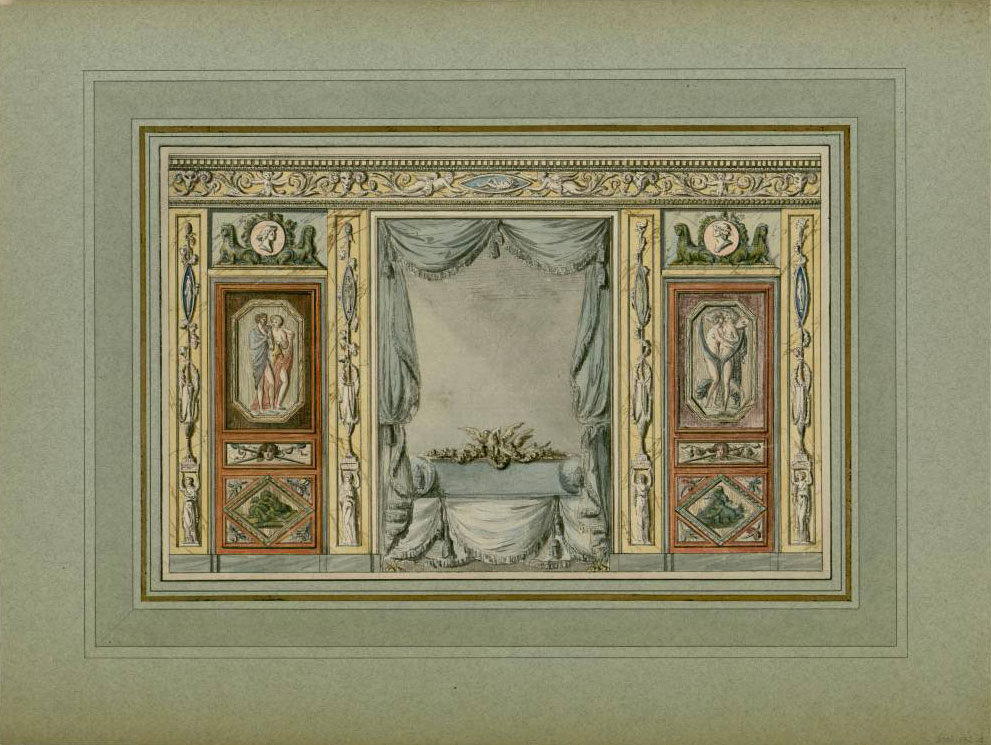


If you want to use this picture, please contact our library
In the late 19th century, this decor was dismantled and reinstalled in a Parisian apartment, and again underwent modifications when it was installed in the Musée des Arts Décoratifs after the First World War. The original drawing room, much larger, had five mirrors and two windows opening onto a courtyard. It was probably when the house was acquired by Louis Ragueneau in 1795 that it was decorated in this manner, typical of the style then dominant in interior decoration.
The “goût tapissier” typical of the most luxurious interiors in the last years of Louis XVI’s reign gave pride of place to furnishing fabrics. As here, wood panelling alternated with panels hung with silk fabric, windows were amply decorated with drapery and trimmings, and chair rims were festooned with silk. Stretched, draped and pleated fabrics were combined with other materials in novel harmonies of green, mauve and fawn, colours then fashionable, to create a refined atmosphere.

When this decor was restored, a fawn-coloured gros de Tours, a type of taffeta (plain-woven silk fabric) was chosen to harmonise with the colours of the panelling.
The rouge griotte marble fireplace has a gilt bronze frieze with griffons echoing those on the room’s painted cornice frieze. The two Egyptian therms (busts on tapering plinths) framing the hearth herald the “Egyptomania” during the Empire. The antique-inspired ornamental vocabulary adopted by Neoclassicism is well in evidence.
The mantelpiece frieze is composed of appliqué gilt bronze palm leaves and winged sphinxes. The hearth is framed with Pharaoh’s heads on tapering plinths.
Perpetuating the decorative principles of the Ancien Régime, the decoration is organised around the axis created by the fireplace and mantel mirror. The narrow panels punctuating the decor are decorated with trompe-l’œil candelabra motifs evoking the patinated bronze ornaments framing Wedgwood-style medallions. The doors are decorated in the same way on a painted faux bois (imitation wood) ground. Many interiors during this period were decorated with similar combinations of candelabra (a motif derived from Antiquity and reinterpreted in numerous ways since the Renaissance), medallions imitant Wedgwood stoneware and faux bois.